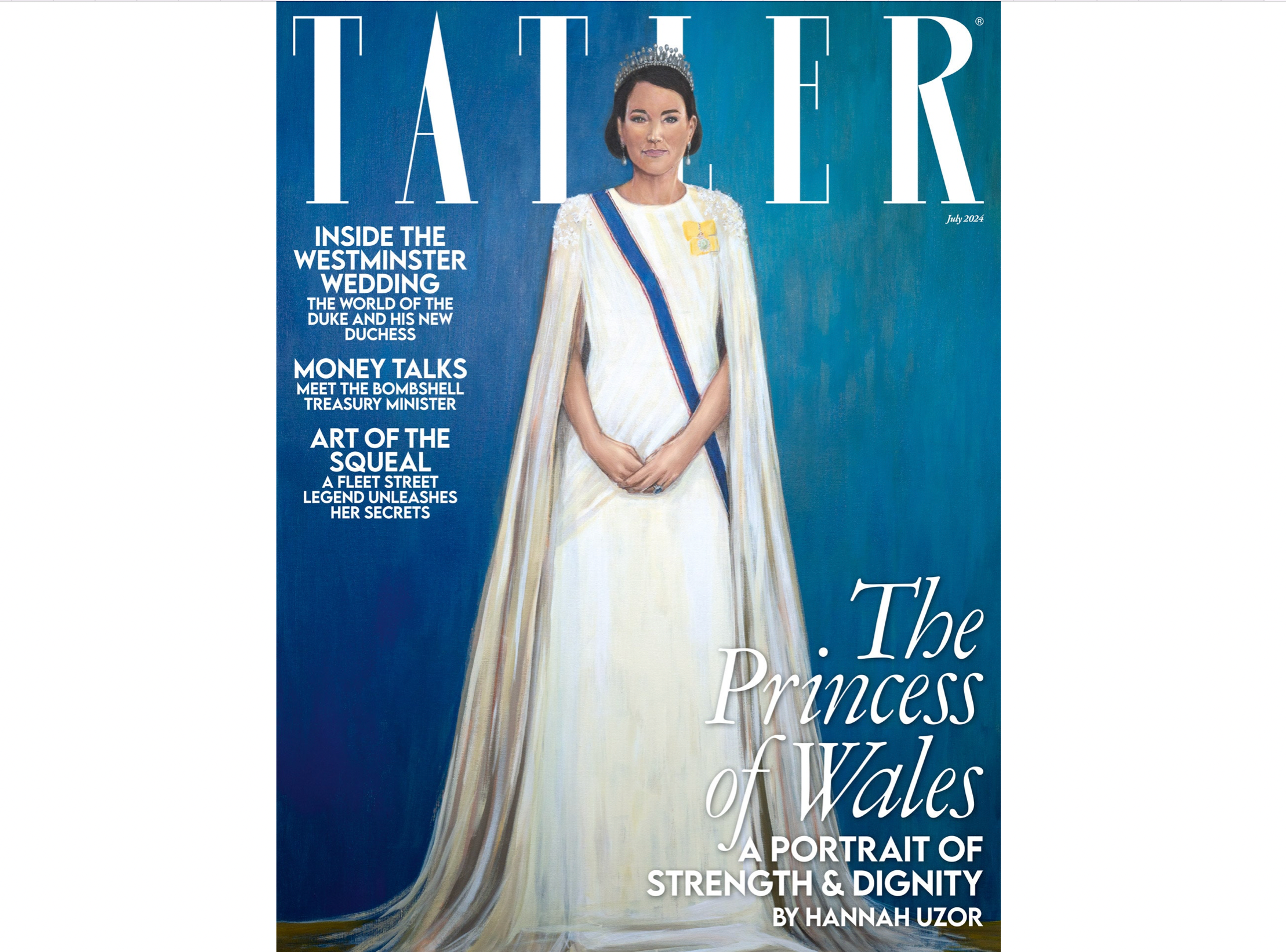The latest cover of Tatler magazine, featuring a painting of Kate Middleton, the Princess of Wales, has stirred significant controversy. The artwork, intended to celebrate the royal’s elegance, has instead sparked widespread criticism and debate regarding its representation and accuracy.
The Controversial Cover
Tatler’s July issue showcases a portrait of Kate Middleton in a regal pose, painted by artist Hannah Uzor. The cover, titled “The Princess of Wales: A Portrait of Strength & Dignity,” aims to highlight Kate’s poise and royal duties. However, the reception has been mixed, with many critics and royal watchers expressing dissatisfaction with the portrayal.
Public and Media Reactions
The reaction to the cover has been swift and divided. Many social media users and art critics have taken to platforms like Twitter and Instagram to voice their opinions. Critics argue that the painting fails to capture Kate’s true likeness and vibrant personality, describing the artwork as “lifeless” and “unflattering.” Some have pointed out that the portrait makes Kate look older and more austere than she appears in real life.
The controversy has also prompted a response from Kensington Palace. According to various sources, including Fashion Magazine and Observer, the palace has issued statements refuting several claims made in Tatler’s accompanying article. The palace has described the article as containing “a swathe of inaccuracies and false misrepresentations,” particularly regarding Kate’s feelings about her royal duties and the alleged workload she faces following Prince Harry and Meghan Markle’s departure from senior royal roles.
Artistic and Royal Commentary
Despite the backlash, some have come to the defense of the artist and the magazine. Supporters argue that art is inherently subjective and that the painting captures a different, perhaps more introspective side of the Princess of Wales. Tatler’s Editor-in-Chief, Richard Dennen, has stood by the cover and the reporting, stating that the magazine worked closely with sources close to the royal family and that the depiction was meant to reflect Kate’s strength and dignity during challenging times.
Historical Context of Royal Portraits
This is not the first time a royal portrait has faced public scrutiny. Historical and contemporary depictions of royals often ignite debates about representation and artistic interpretation. Similar controversies have surrounded portraits of Queen Elizabeth II and Princess Diana, where public expectations and artistic freedom sometimes clash.
Looking Ahead
As the debate over Tatler’s cover continues, it underscores the complexities of portraying modern royals in the media. While the controversy highlights differing opinions on artistic representation, it also reflects the public’s ongoing fascination with the royal family and the scrutiny they endure.
For more details on the cover and the ongoing discussions, visit Tatler’s official site and other major news outlets covering this story.
This development continues to show how royal depictions in art and media can provoke significant public interest and debate, influencing how we view and understand the roles of contemporary royals.






















